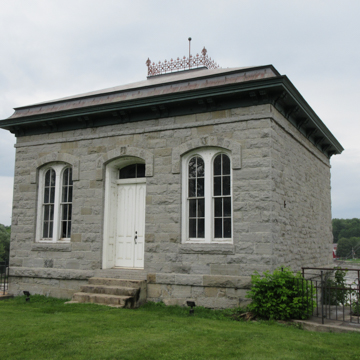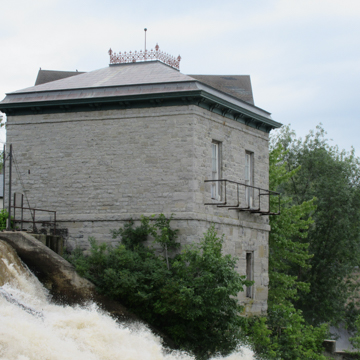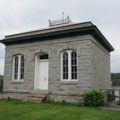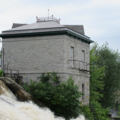The pumphouse is a one-story, stone, 30 × 30– foot hipped-roof Italianate structure. Dramatically sited, it is one of two nineteenth-century municipal pumphouses remaining in Vermont. The civic pride and aspirations of nineteenth-century Vergennes are fully evident in the building. Sited eighteen feet above high water atop a dramatic falls on Otter Creek, its walls are three feet thick and built of regularly coursed, rough-faced ashlar shipped from Essex, New York, across the lake. With large segmental-arched windows and entrance and delicate cast-iron cresting atop its flared hipped roof, the pumphouse compares favorably with the contemporary Second Empire pumphouse on the University of Vermont campus. Inside are two pumps that pushed water uphill to Main Street. Devised locally by J. P. Flanders, the pumps were manufactured by the Vergennes Machine Company at the falls and used in municipal systems throughout the East.
As one of the few remaining historic industrial buildings of the former mill district, the pumphouse is an essential part of the historic “skyline” atop the falls, an upriver view that for many still defines Vergennes. Located on an island (that supports the bridge) in the falls, the pumphouse is accessed only from another island, where the brick Norton grist-mill of 1878 still stands.












